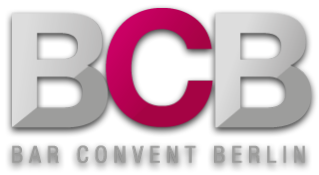Ready-to-drink Cocktails: So much more than a Stop-gap Solution
© Shutterstock
Not so long ago, ready-to-drink cocktails were considered a less than desirable “poison of choice” – no more than mediocre products combined in a can or premixed classics in strange receptacles. While real cocktail lovers – quite rightly – tended to head to their favourite bar to enjoy classic drinks and bartenders’ own creations, perfectly balanced and attractively served.
But times and needs change pretty fast. Just like sales figures and balance sheets. And so terms like “RTD”, “RTS”, “bottled cocktails” or “tapped cocktails” are becoming real buzzwords when it comes to sales on the drinks market.
Forget cans of Rum & Coke, Whiskey & Coke, Gin & Tonic or Vodka & Red Bull on supermarket shelves. Because the product quality of ready-to-drink (RTD) and ready-to-serve (RTS) beverages has grown steadily and substantially in a short space of time, and their potential markets are developing in all sorts of ways for end consumers and businesses alike.
Ready-to-serve: Drink concepts to deal with the crisis
While many bars improvised bottled cocktails for their regular punters during lockdown, some of these ad-hoc projects became successful new business models. After premixed drinks options for the end consumer, other marketing opportunities emerged in the hotel and hospitality industry. For months now, we’ve been closely following all the reports about staff shortages and the knock-on effects on what many hotels and restaurants can now offer. High-quality ready-to-serve cocktails can be an option for some businesses to satisfy customers without the need for highly trained staff.
Well-known Cologne bartender Stephan Hinz recently presented his new range of bottled cocktails under his “Cocktailkunst” brand. From Popcorn Old Fashioned to Spicy Espresso Martini, Hinz is initially offering five bottled cocktails that give successful classics a distinctive a twist. Hinz points out the possibilities here: “Cocktailkunst’s ready-to-serve drinks also offer great potential for the hospitality industry. In just a few simple steps, even unskilled staff can serve high-quality cocktails in no time at all. The fact that these can also be combined with mixers like tonic water, ginger beer or soda creates a wide base that a complete cocktail menu can be built on.”
Popular TV bartender Nic Shanker is also keeping an eye on developments, bringing them together with his cocktail catering experience. With his new project in the starting blocks, he says: “The great thing about the bartending profession is that you can always reinvent yourself. I’m currently developing a new project together with David Rippen and Hakan Celebi focusing on pre-batched cocktails. Many products currently on the market contain some degree of preservatives, otherwise they wouldn’t stay fresh. We just want to work with fresh ingredients. So we offer a high-quality concept for hotels and restaurants that can charge 12 to 15 euros a drink.”
International trend: Cocktails on tap
At Bar Convent Berlin last October, visitors had the chance to experience some of the rapid developments in the RTD and RTS sector first-hand. For instance, with an Espresso Martini on tap. Traditional brand DeKuyper had already launched its bottled cocktail range in 2024, causing a stir with its Passionfruit Martini in particular. Now this Dutch spirits and liqueur manufacturer has taken things to the next level presenting five-litre units of its read-to-serve drinks and the same Espresso Martini on tap.
The German Bartenders’ Union (DBU) also installed a set of draught taps in its presentation area, where visitors could sample various concoctions. Bars and restaurants around the world are already heavily focusing on concepts centred around these “tapped” or “draught cocktails” and many a pub is swapping beer for cocktails at one of its draught taps.
Distributors and manufacturers are also responding and expanding their range with stationary or mobile cocktail dispensers or developing kegs with an in-built stirring mechanism to guarantee consistent flavour or nitro dispensers for that special mouthfeel thanks to the use of nitrogen.
Market analysis meets trend scout
Which trends and fashions are here to stay and which are just a flash in the pan? Business magazine Forbes is keeping a very close eye on beverage trends in the ready-to-drink sector and have confirmed astonishing sales growth in this field. They are also shedding light on a number of beverage trends yet to achieve the status they have in the USA or Japan. For instance, hard seltzer, hard coffee, hard tea, hard kombucha and wine spritzers.
Market pundits anticipate annual growth rates in sales by volume and value of 3% to 6%.
With cool can designs and advertising copy that promises reduced calories and lower alcohol content, the industry is focussing on millennial target groups whose interest can easily wane again though. However, influencer-optimised product successes like “Wildberry Lillet” or “Perfect Cosmo” by Sarah Jessica Parker are injecting momentum into the market segment.
Not a breakthrough yet – but an entertaining approach – was also recently offered by the soup brand Campbell’s with its “Brothtails”, i.e. broth-based cocktails. Maybe these will be the next RTD trend from the tetra pack: “Pork Ramen Mezcal Margarita”, “Thai Chicken Negroni” or “Mushroom Truffle Daiquiri”?
